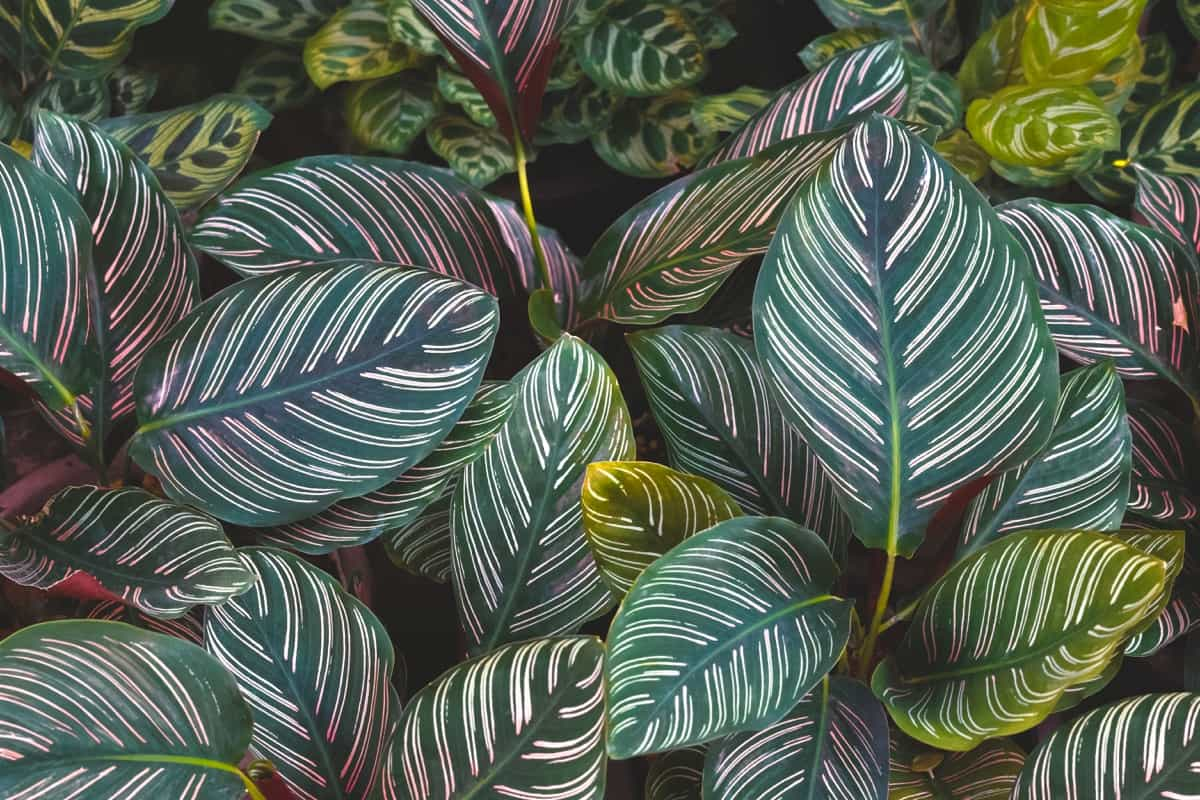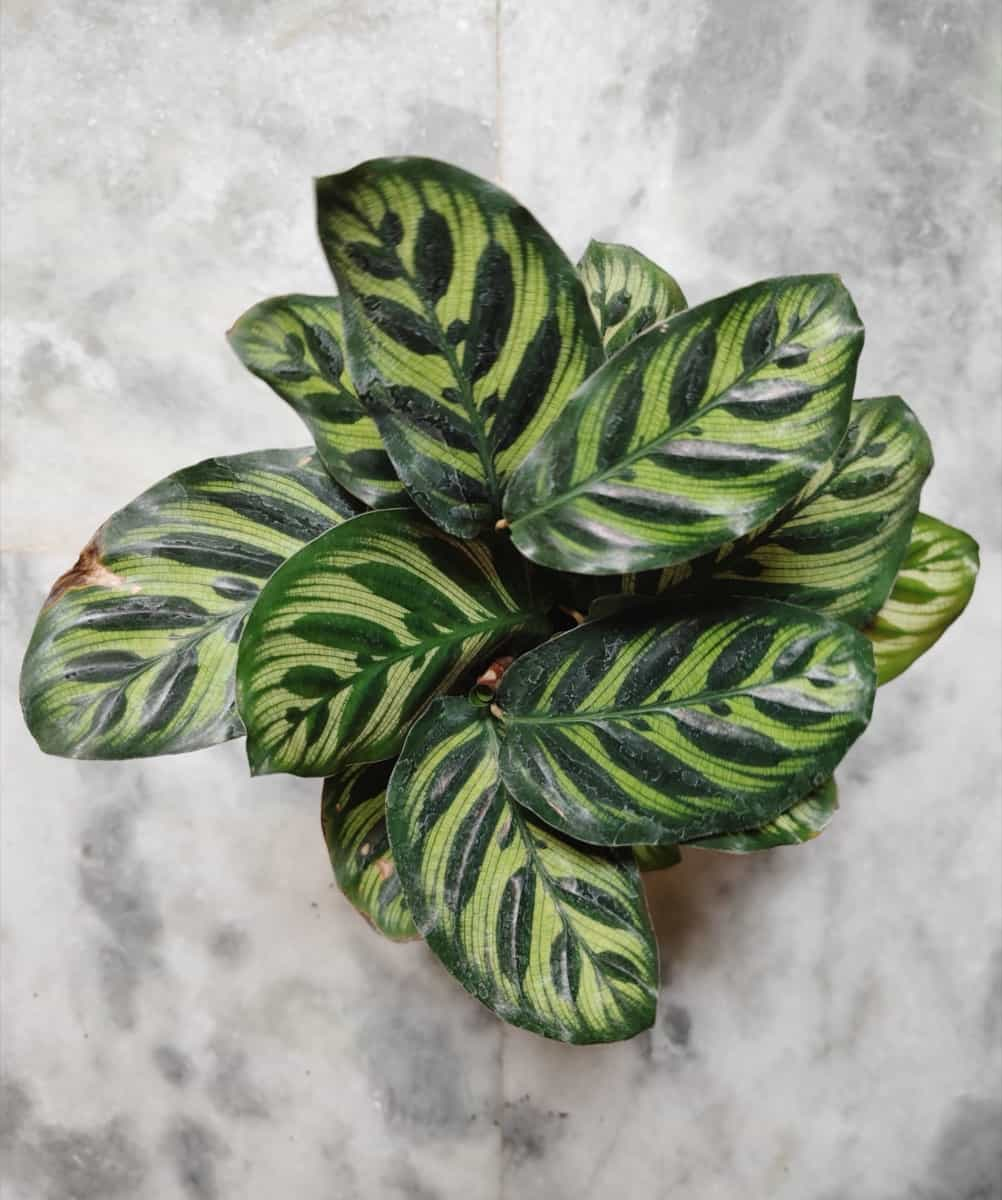Fertilizing your Peacock plants is essential for their growth and vibrancy. By using homemade fertilizers, you not only save money but also ensure that your plants are getting natural and organic nutrients. Experiment with the different organic fertilizers for Peacock plants and what works best for your Peacock Plants. Remember to apply fertilizers sparingly and consistently to avoid overfeeding or underfeeding your plants. With Calathea, sustainable plant care tips keep your Peacock plants healthy and thriving all year round.

10 Best Homemade Fertilizers for Peacock Plants
Coffee Grounds Fertilizer
Benefits of Soil Acidity
Coffee grounds contain essential nutrients like nitrogen, potassium, and phosphorus that help in the healthy growth of your plants. The benefit of using coffee grounds as fertilizer is their ability to improve soil acidity levels. Peacock plants thrive in slightly acidic soil, making coffee grounds an ideal natural amendment to maintain the right pH balance.
Application Method
To apply coffee grounds as fertilizer, sprinkle them around the base of your Peacock plant. You can also mix them into the topsoil gently to ensure even distribution. Avoid overdoing it, though, as too much caffeine can harm your plant’s roots. Remember to use spent coffee grounds rather than fresh ones since fresh ones may still have high acidity levels that could be detrimental to your plant.
Eggshell Tea
Calcium Boost for Healthy Growth
Eggshell tea is like a secret potion for your Peacock plants, providing them with a much-needed calcium boost for robust growth.
Preparing and Using Eggshell Tea
When it comes to Eggshell tea for Calathea, start by collecting eggshells and crush the clean eggshells into small pieces. The finer the shells are crushed, the better they will infuse into the water. Place these crushed shells in a container and cover them with boiling water. Let this mixture steep overnight to allow the calcium to leach out from the shells. Water your plants with this nutrient-rich concoction once every two weeks to ensure they receive their dose of calcium goodness for healthy growth.
Banana Peel Fertilizer
Potassium for Root Development
Banana peel fertilizer is the best way to boost your Peacock plant’s root development. It’s rich in potassium, a vital nutrient for strong and healthy roots.
Preparation and Application
To prepare this DIY Calathea fertilizer, chop up banana peels and bury them around your plant. As the peels decompose, they release potassium slowly into the soil, providing long-lasting benefits to your Peacock plant. This organic fertilizer not only nourishes your plant but also helps reduce waste by repurposing kitchen scraps. By incorporating banana peel fertilizer into your gardening routine, you can promote robust root growth and vibrant foliage on your beloved Peacock plants.
In case you missed it: Homemade Fertilizers for Malabar Spinach: Get More and Large Green Leaves

Aquarium Water
Nutrients from Fish Waste
Aquarium water is a hidden gem in the world of plant fertilizers. The fish waste in aquariums contains valuable nutrients that can benefit your Peacock plants. Instead of disposing of this nutrient-rich water, consider using it to feed your plants.
How to Use for Watering
To use Aquarium water as fertilizer for Peacock plants, collect the water during routine tank cleanings. Make sure to dilute it with regular tap water to avoid over-fertilizing and harming your plants. The nutrients present in aquarium water, such as nitrogen and phosphorus, can promote healthy growth and vibrant foliage in your Peacock plants. Additionally, the beneficial bacteria from the fish waste can contribute to soil health and overall plant vitality.
Epsom Salt Solution
Magnesium for Chlorophyll Production
Magnesium is essential for chlorophyll production, which means vibrant green leaves.
Mixing and Usage Instructions
Mixing up an Epsom salt solution is easy. Simply dissolve one tablespoon of Epsom salt in 1 gallon of water. Stir well until completely dissolved. When it comes to using this nutrient-rich solution, less is more. Apply it to your Peacock plant’s soil once a month during the growing season. Overdoing it can lead to magnesium buildup and harm your plant. Remember, moderation is key when feeding your plants with any homemade fertilizer.
Compost Tea
Rich in Essential Nutrients
When it comes to compost tea recipes for Peacock plants, they are packed with essential nutrients to help them thrive.
Brewing and Application Process
Brewing this nutrient-rich elixir is easier than you think – mix compost in water and let it steep for a few days. The brewing process allows beneficial microorganisms to multiply, creating a powerful cocktail of plant-loving goodness. Applying compost tea to your Peacock plants is a breeze. Just pour it around the base of the plant or use a spray bottle to mist the leaves.
Green Tea Fertilizer
Mild Nutrient Supplement
Green tea is a nutrient-rich solution for Calathea, it can also work wonders as a mild fertilizer for your Peacock plants. To make this natural nutrient supplement, start by brewing a cup of green tea using hot water and letting it cool completely. Once the tea is at room temperature, dilute it further with an equal amount of fresh water to create your homemade fertilizer solution.
Method of Preparation and Use
Remember not to use any flavored or sweetened varieties of green tea as they may harm your plants. The subtle nutrients in green tea can help support the overall health and growth of your Peacock plant without overwhelming them with too much fertilizer at once. To apply the green tea to indoor plants, gently pour the diluted mixture into the soil around the base of your plant.
Rice Water Fertilizer
Starches for Soil Microbes
Rice water fertilizer is a hidden gem in the world of plant care. It might sound unusual, but rice water can work wonders for your Peacock plants. The starches present in rice water act as food for beneficial soil microbes, promoting healthy growth and nutrient uptake.
In case you missed it: How to Grow Tulsi in Home Garden: Discover from Propagation to Planting

Collecting and Applying Rice Water
To collect rice water for plant growth, save the water you use to rinse uncooked rice before cooking. This starchy liquid contains nutrients that can benefit your plants. After collecting the rice water, allow it to sit for a day or two to ferment slightly, enhancing its potency. When applying rice water to your Peacock plants, dilute it with an equal amount of fresh water to prevent any potential salt build-up. Water your plants as usual with this nutrient-rich solution once a week during the growing season to see vibrant results.
Wood Ash Fertilizer
Potash for Flowering and Fruiting
Wood ash garden is used for Calathea, which can promote flowering and fruiting in your plants. It’s an eco-friendly way to give your Peacock plants the nutrients they need to thrive.
Guidelines for Safe Use
When using wood ash as a homemade Peacock plant fertilizer, it’s important to follow some guidelines for safe use. First, make sure the ashes are completely cool before applying them to the soil. Hot ashes can damage plant roots and soil organisms. To apply wood ash to your Peacock plants, sprinkle a thin layer around the plant and gently work it into the soil.
Avoid applying too much ash, as it can raise the pH level of the soil. Too much potash can be harmful to your Peacock plants. Use it sparingly and monitor how your plants respond to ensure they are getting just the right amount of nutrients they need.
Vermicompost Leachate
Liquid Gold Nutrient Mix
Vermicompost leachate, also known as liquid gold in the gardening world. This nutrient-rich liquid is a byproduct of composting with worms and is packed with essential nutrients that will supercharge your plant’s health.
Harvesting and Fertilizing with Worm Tea
Harvesting vermicompost leachate is simple – collect the dark-colored liquid that drains from your worm bin. Dilute it with water before using it to avoid over-fertilizing your plants. When it comes to Vermicompost leachate benefits your Peacock plant will thank you for this organic elixir, promoting lush greenery and vibrant blooms. Fertilizing with worm tea couldn’t be easier – pour the diluted vermicompost leachate at the base of your plant, ensuring it absorbs all those beneficial nutrients.
In case you missed it: Calandiva Plant Care: Pruning, Propagation, and Indoor Care

Conclusion
Incorporating homemade fertilizers into your Peacock plant care routine can be a rewarding way to nurture your green companions. By utilizing Peacock plant growth hacks like coffee grounds, eggshells, banana peels, and more, you not only provide essential nutrients for vibrant growth but also contribute to sustainable gardening practices.
- Flower Garden Designs and Layouts for Beginners
- Planting and Spacing Techniques in Papaya: A Beginner’s Guide
- Growing Gold: Essential Techniques for Planting Pineapples
- How to Make Kalanchoe Plant Bushy: Home Remedies and Solutions
- 11 Reasons Why Your Gardenia is Not Blooming: Home Remedies and Solutions
- Eco Elegance: The Guide to Designing a Drought-Tolerant Landscape
- Gardening on a Slope: Strategies for Hillside Landscaping
- Nourish and Flourish: Top Organic Mulches for Thriving House Plants
- Everything You Want to Know about Indian Mogra Flower: Discover Uses and Growing